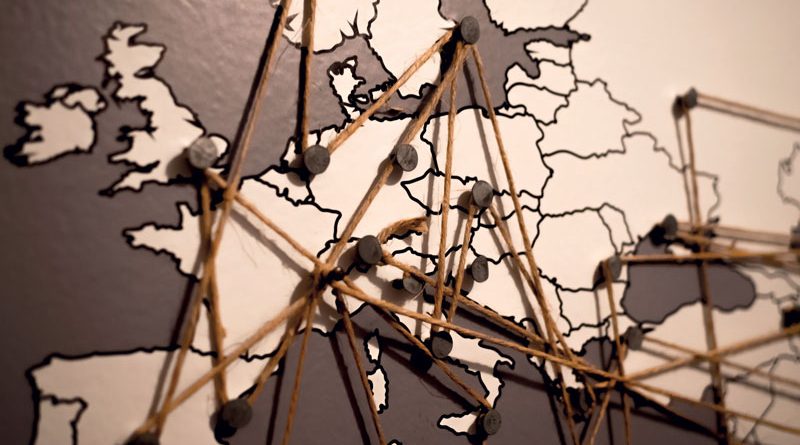A Practical Guide to Successful Internationalization
ITA (Italian Trade Agency) is the name that has taken over the ICE since 2011, when the institution faced a reorganization that did not change its purpose: to support Italian companies, and especially SMEs, in their road to internationalization. Marinella Loddo, director of the ICE Office in Milan, gave us an interesting interview that covered also very tangible aspects of the agency’s activity.
by Fabrizio Dalle Nogare
In 2011, the ICE (Institute for Foreign Trade) became ITA (Italian Trade Agency). In addition to the formal name change, has anything changed from a more substantive viewpoint?
First of all, the legal subject has changed from a non-economic public body to an agency (Agency for the promotion and internationalization of Italian companies), that is a structure with the task of achieving objectives set by the ministry of reference, in our case is MISE, following the government economic policies. We have a new structure: in Italy there is a central office in Rome, with offices dealing with the different industrial sectors, including the Industrial Technology, Energy and Environment Office (see box at page 43, ed) and the Milan office, which is in charge of the central and northern regions and therefore has a territorial approach. Abroad there are currently 64 offices and 14 branches.
Therefore, also the ICE philosophy has adapted to the changes in the market…
Yes, it has. Our action is not limited to commercial support, but includes support to how companies are present in foreign markets, in terms of investments, industrial partnerships, technology transfer and so on. In order to internationalize, in fact, we need to know not only the economic data but also the customs, culture and tendencies of a nation.
What kind of tools are available to small entrepreneurs to be updated on foreign markets trends?
We take care of various publications that allow us to get an idea of foreign markets and their trends, such as the ICE Report on Foreign Trade, published every year, the ICE-Prometeia Report “Evolution of foreign trade by areas and sectors”, which also provides forecasts on future prospects and “Italia Multinazionale”, focused on investments. Our promotional program, financed by the ICE fund reserved in the Stability Law, has about 850 initiatives a year including participation in trade fairs and the creation of workshops, events and B2B seminars. In addition, companies can request customized consulting services at low costs.
Which actions should be taken by an SME willing to look abroad?
Intercepting the sources of international demand, first of all, then look at the imports of the major world countries and those that can be more promising. The statistics are very important and we need to start from there.
It is also essential to analyze the dynamics and trends of the sector in a given country, as well as the behavior of competitors. If I may use a metaphor, we could say that if you want to operate on foreign markets, you need to be a bit cross-eyed: think about today but, at the same time, try to see the signs of change that come from customers as well as markets, to anticipate future trends.
Is it correct to consider the geographical proximity of a market as the key parameter, especially for SMEs?
In general, Europe is still the main market for Italian goods. In other words, the parameter according to which the most attractive countries are those reachable with no more than 2-3 hours of flight is still valid. This is because long journeys also imply an increase in costs and resources. According to what said before, Eastern Europe countries, as well as North Africa, are always very hot markets for Italian companies. However, I am convinced that one of ICE’s tasks, as a public body, is to explore the potential of markets that do not fall within the main circuits, with the aim of anticipating trends and highlighting any points of interest.
On the other hand, there are entrepreneurs, however, who must do their part…
We need to invest even more in knowledge, an increasingly important aspect in today’s context, as well as focusing on networking, on relationships. As ICE, we always push companies to consider the idea of joining together in business networks: in a market that is increasingly looking for solutions rather than individual products, it is certainly more profitable to come together to negotiate with potential large customers.
Do you think that the recent attention paid to technological innovation, also thanks to the National Industry 4.0 Plan, makes Italian industry perceive as more modern?
And what is the image of Italian mechanics abroad?
The current renewal of machinery fleet in Italian companies is giving very positive results. The changes taking place in the productive world are complex processes, which also involve schools and the training of employees, and they must necessarily be guided with the right balance. As for the mechanics industry, insiders know the value of Italian companies, which are able to find customized solutions and offer high quality products like few others. There is not yet the perception of the Italian mechanics industry as a sector of excellence – like fashion, food or furniture – but we are working hard, even from a promotional point of view, to fill this gap.

